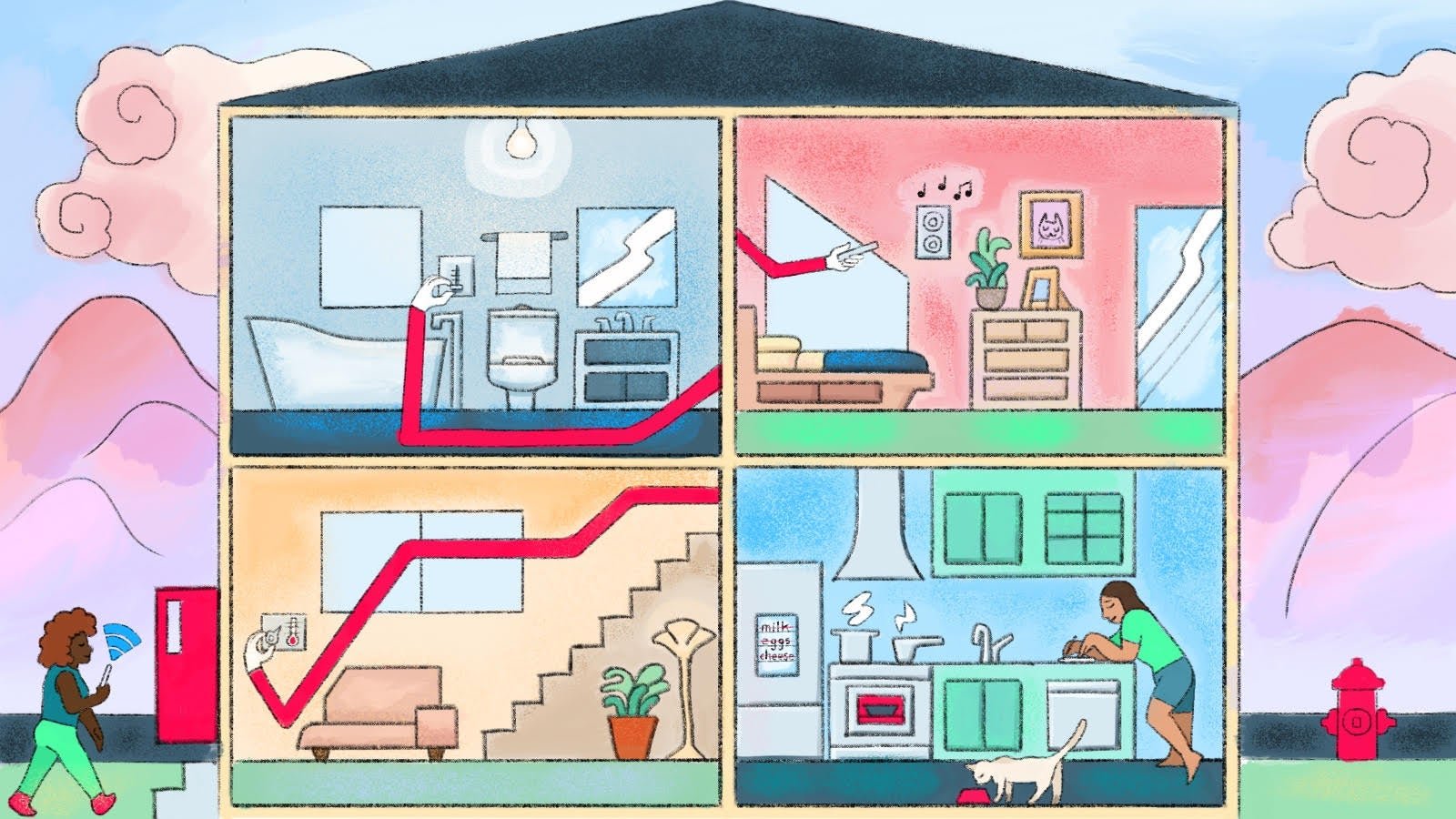Tomorrow’s home works harder for you than an assistant and knows you better than your family
With large swaths of the American population working longer hours, people value their time at home more than ever—time that promises to be better spent with help from advances in smart home technology over the next two decades.


With large swaths of the American population working longer hours, people value their time at home more than ever—time that promises to be better spent with help from advances in smart home technology over the next two decades.
Internet of Things (IoT) and AI innovations will soon be seamlessly woven into the patterns of daily life, simplifying everything from making breakfast to curating entertainment to ensuring home security. Connectivity will enable devices to speak to each other frictionlessly, while emotionally-aware computing will introduce an unprecedented level of personalization.
Researchers have already seen a sharp uptick in the adoption of smart home technology, and it’s a trend that will continue to accelerate into 2030. Consumers see the change coming, with almost 60% reporting that they believe their lives will change dramatically in the coming years due to smart home technology. The number of connected homes in the US leaped from 17 million in 2015 to 29 million in 2017 alone. Statista forecasts that connected products will triple in the next seven years, with 75 billion devices installed around the world.
Press reports heralded 2017’s CES as the “year of integration,” signaling that connectivity will be one of the major themes to emerge in the future of smart homes. One of the barriers holding back the evolution of this technology has been the inability of independent IoT devices to communicate with each other, as companies battle for control of the space.
We’re already beginning to see that shift with collaborations between smart devices like Airmega, an air purifier, with Amazon’s Alexa, while GE has paired up with Nest to prevent harm from malfunctioning ovens. The IFTTT (If This Then That) platform allows consumers to bind together smart home devices that aren’t naturally compatible using “recipes” to configure their cooperation.
Many connected devices today still require constant input from users. By 2030, networked devices and systems will be not only automatic but predictive. Sensors installed throughout the house could detect a leak in the basement, pushing a notification to a hub which would then create a search for the highest-rated local plumber, and book the next available appointment for repairs. (Insurance companies are already offering discounts for customers with various smart home protections.)
A wearable that detects poor sleeping and an illness coming on could have hot water boiling for tea before the user is even out of bed, and notify a smart fridge equipped with a screen to suggest nourishing foods. It might sound like science fiction, but such solutions are only a decade or so away.
Dovetailing with increasingly sophisticated connectivity will be new layers of personalization. Currently, the industry of smart home devices offers plenty of mass market solutions, but few yet that can deliver the pinpoint customization we see in algorithmic content platforms like video streaming services. That’s starting to change now. Consider that Alexa has already gained the ability to distinguish between different voices, and to produce personalized replies based on who it’s talking to.
Experts believe much of the progress in tailoring smart home systems will be linked to voice biometrics. As you walk up to your front door, speaking a few words would allow your house to recognize your unique vocal blueprint, unlocking the front doors and triggering a whole suite of preferences inside, from putting on your favorite playlist, setting a smart thermostat to your ideal temperature, and switching the TV to your channel of choice.
Enabling this level of customization will be the incredibly rich tapestry of data the house will be able to generate for each inhabitant, based on information gathered from sources including geotags, online shopping carts, search functions, and even your heartbeat.
One of the most fascinating and groundbreaking advances in this field is the rise of emotion AI or affective computing. Through voice biometrics and other indicators, AI is on its way to being able to gauge your emotional state and respond accordingly; such technology already exists in cars, with some models that can adapt the responsiveness of brakes based on the driver’s level of anxiety. Gartner predicts that by 2022, connected devices may even know more about a person’s emotional state than their family.
To hear some of the more futuristic possibilities of the smart home, it might seem as if the novelty of the technology is the point. In fact, what connectivity and personalization will mean is a world in which we’re actually less aware of the technology that is smoothly enmeshed into daily life, taking care of household tasks without requiring effort from the user. That means more time at home doing exactly what you want to do.